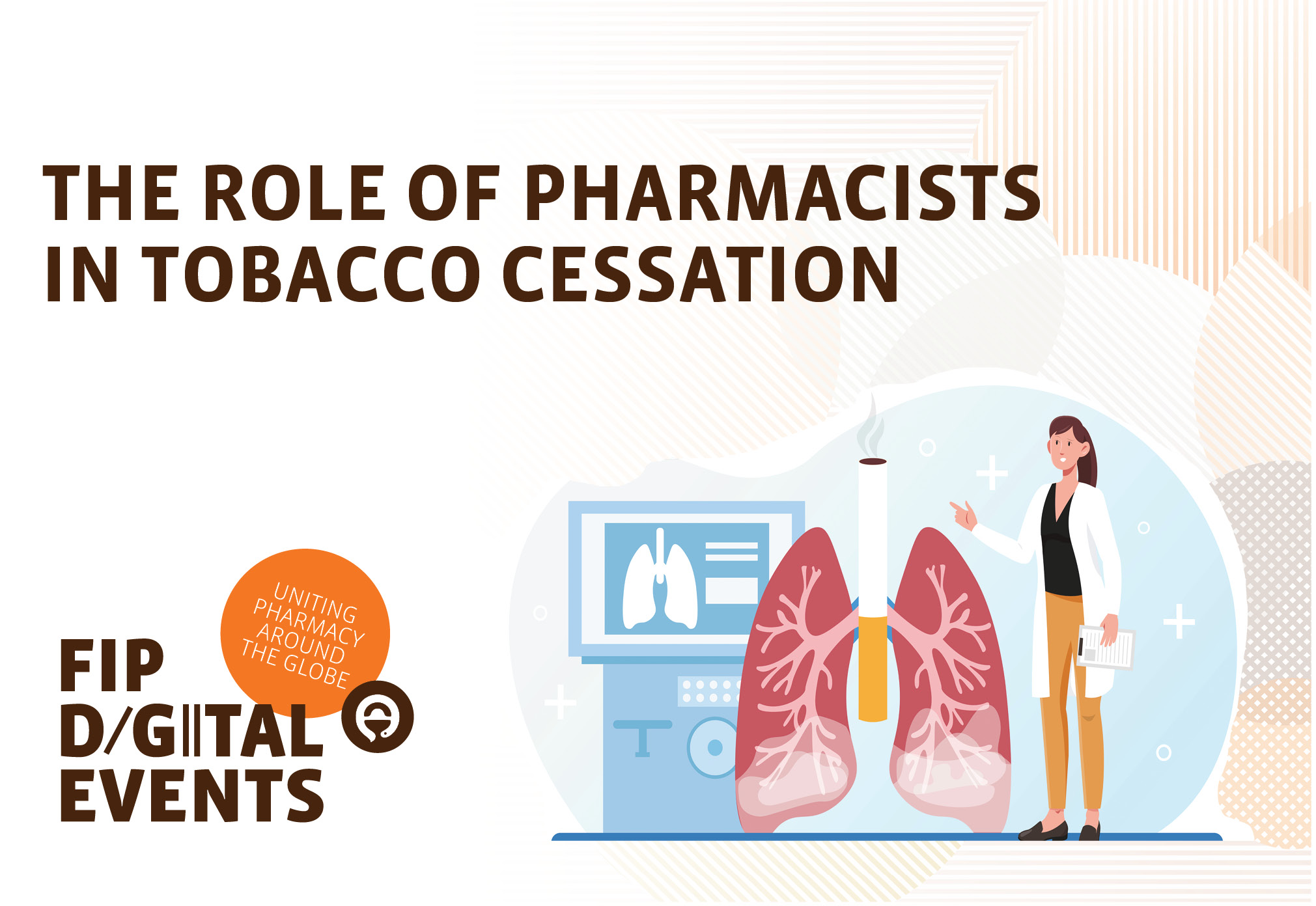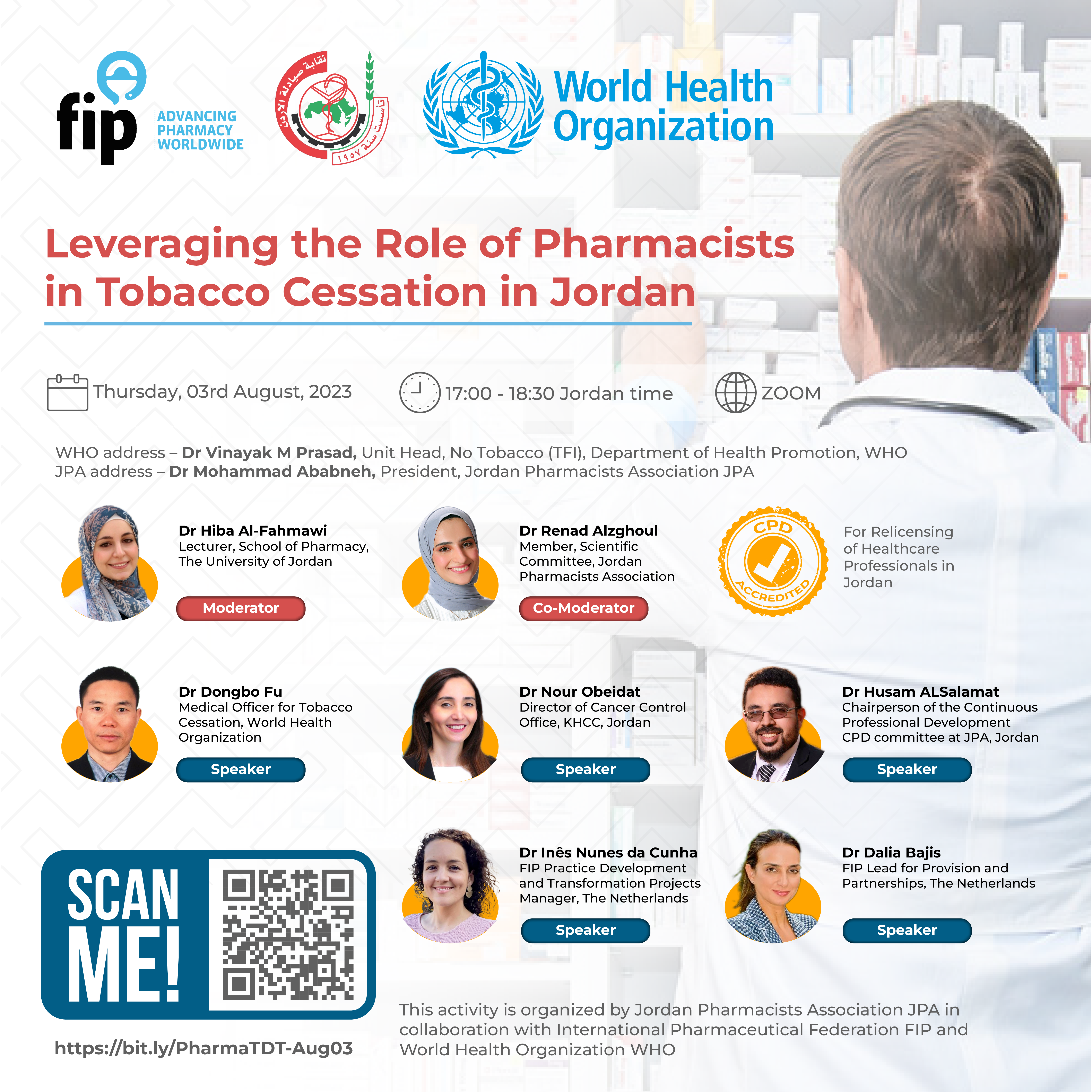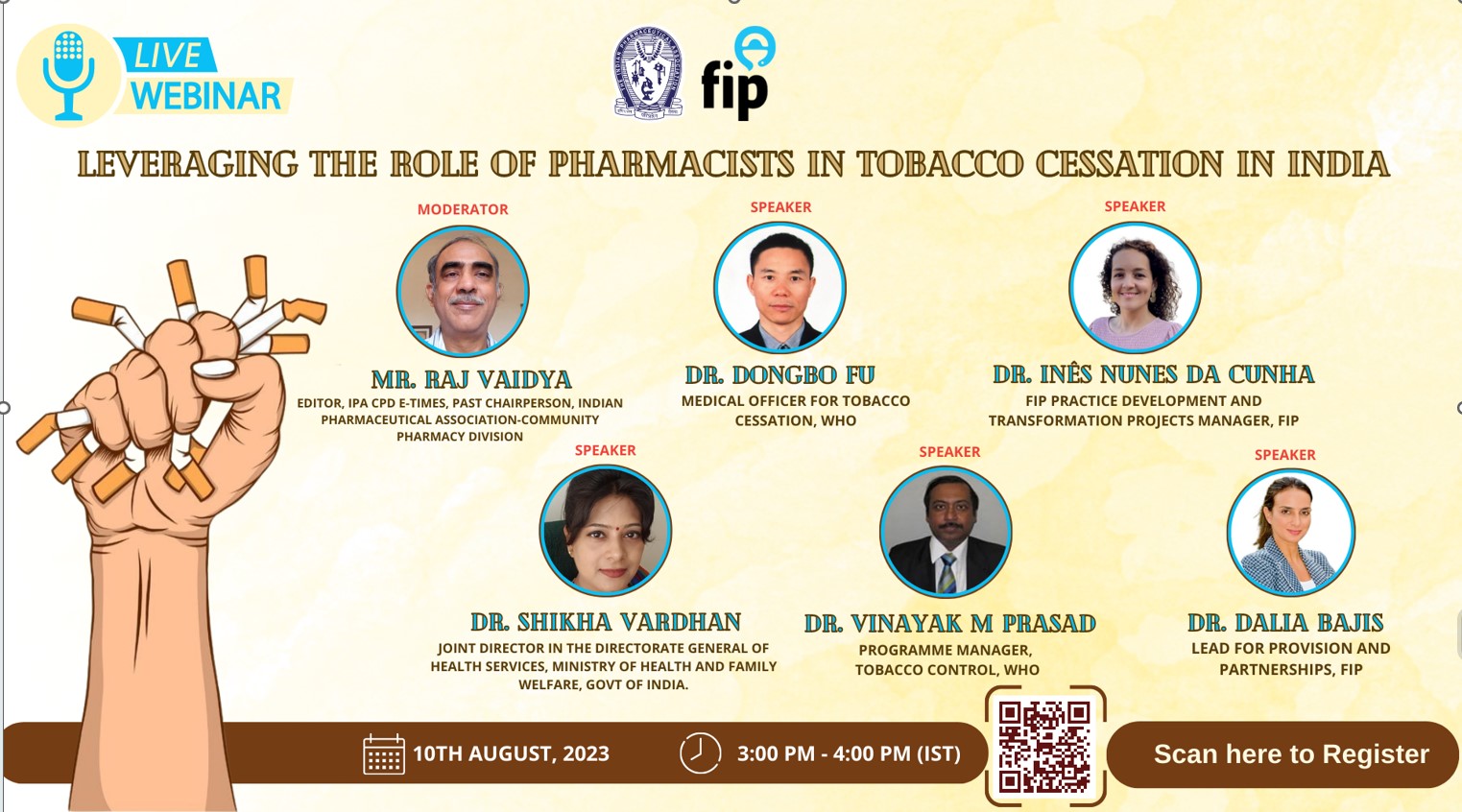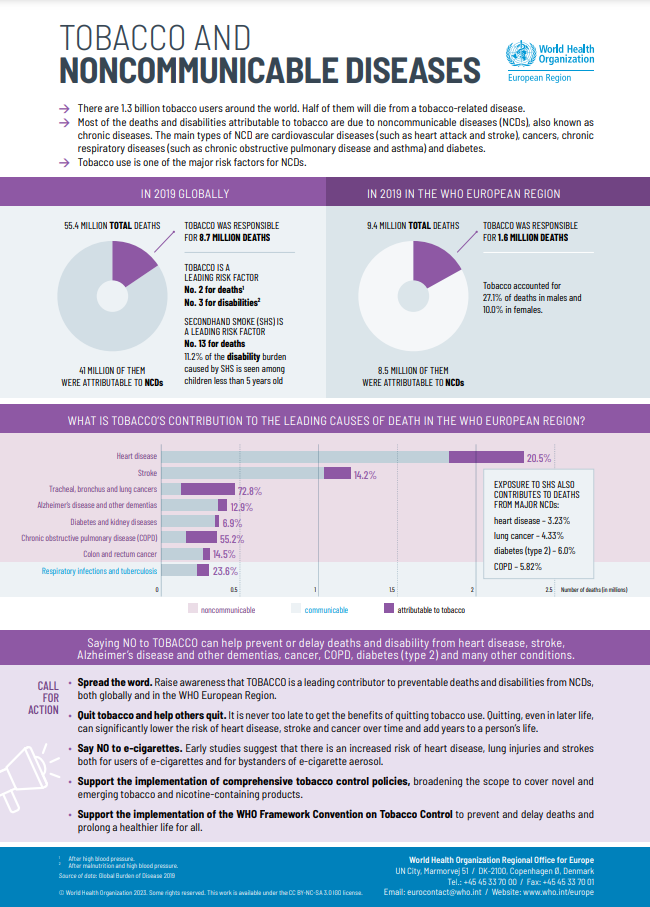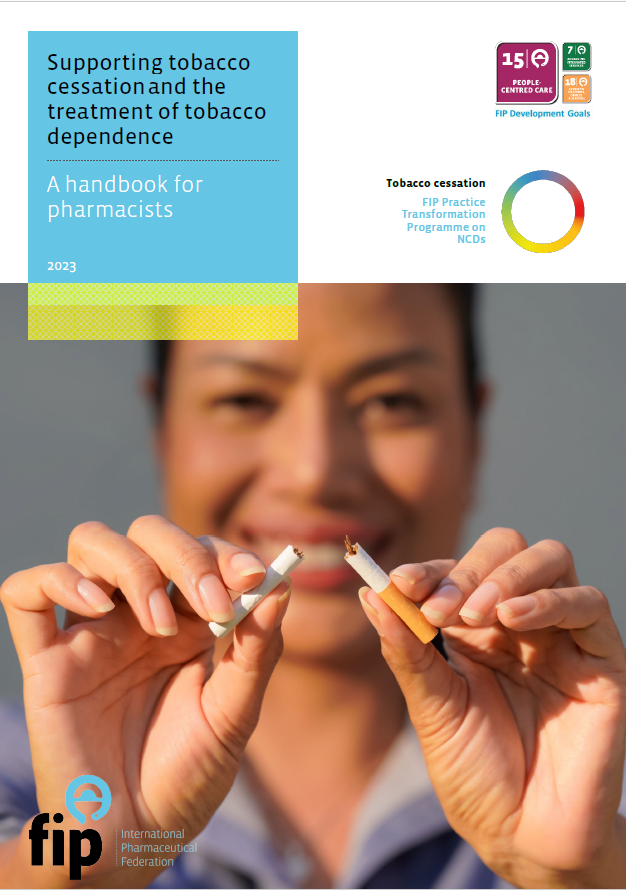
Supporting tobacco cessation and the treatment of tobacco dependence: A handbook for pharmacists (2023)
This handbook has been developed as a comprehensive and practical resource for pharmacists to support individuals in their efforts to quit tobacco, emphasising the critical role of pharmacists in providing comprehensive and coordinated care to patients seeking to quit. It covers the latest evidence-based practices, techniques and strategies to help our patients quit and not start again. The information contained in this handbook is practicable and tailored to the needs of pharmacists working in the field. By using the information and strategies outlined in the handbook, pharmacists can contribute to improving public health and reducing the burden of tobacco use on healthcare systems.
This publication is available in the following languages:
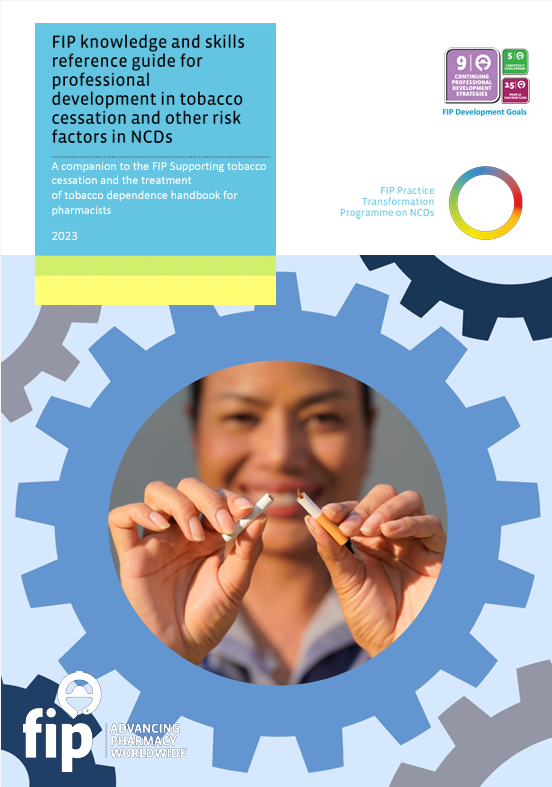
FIP knowledge and skills reference guide for professional development in tobacco cessation and other risk factors in NCDs: A companion to the FIP Supporting tobacco cessation and the treatment of tobacco dependence: A handbook for pharmacists (2023)
The “Supporting tobacco cessation and the treatment of tobacco dependence: A handbook for pharmacists” is accompanied by a publication describing the knowledge and skills required for the delivery of pharmacist-led interventions to support tobacco cessation in addition to other modifiable NCD risk factors such as physical inactivity, unhealthy diet, and harmful use of alcohol.
This publication is available in the following languages:
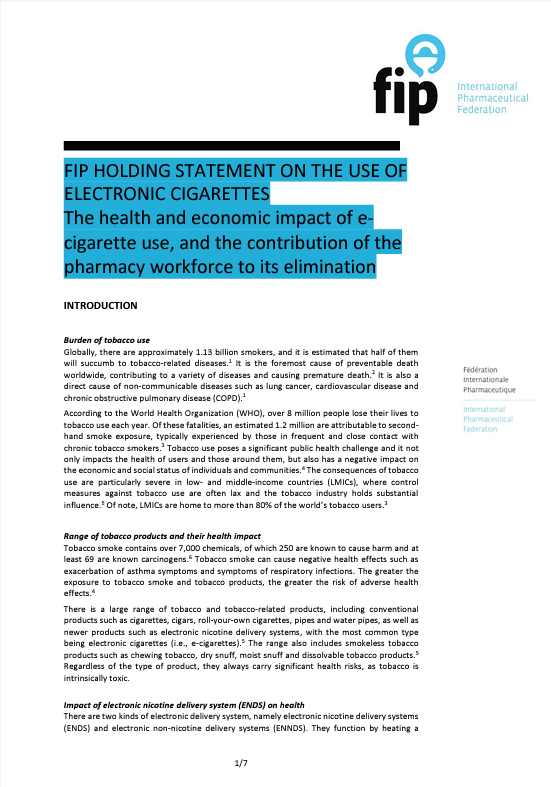
FIP HOLDING STATEMENT ON THE USE OF ELECTRONIC CIGARETTES: The health and economic impact of e-cigarette use, and the contribution of the pharmacy workforce to its elimination (2023)
In light of the increasing use of e-cigarettes, particularly among young people, and concerns around the safety of these products, the FIP Bureau has issued a Holding Statement on the health and economic impact of e-cigarette use, and the contribution of the pharmacy workforce to its elimination.
The statement has been developed by FIP staff and the co-chairs of FIP’s policy committee on tobacco cessation, in collaboration with Bureau members and in consultation with the World Health Organization (WHO).
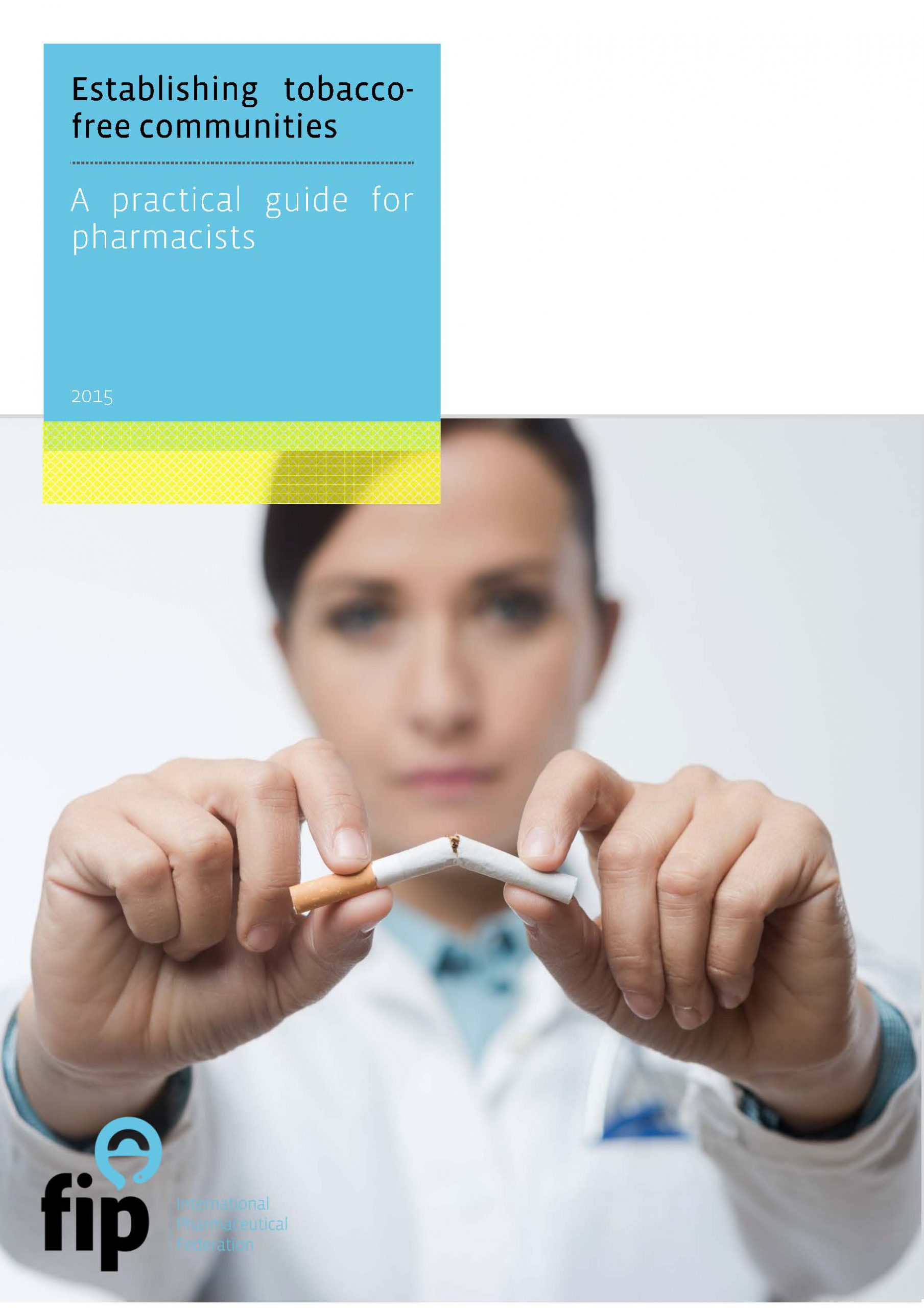
Establishing tobacco-free communities: A practical guide for pharmacists (2015)
This briefing document presents an overview of the different tobacco cessation activities pharmacists are involved in, and aims to support pharmacists to take an even more prominent role during the World No Tobacco Day, which is devoted to the international fight against tobacco.
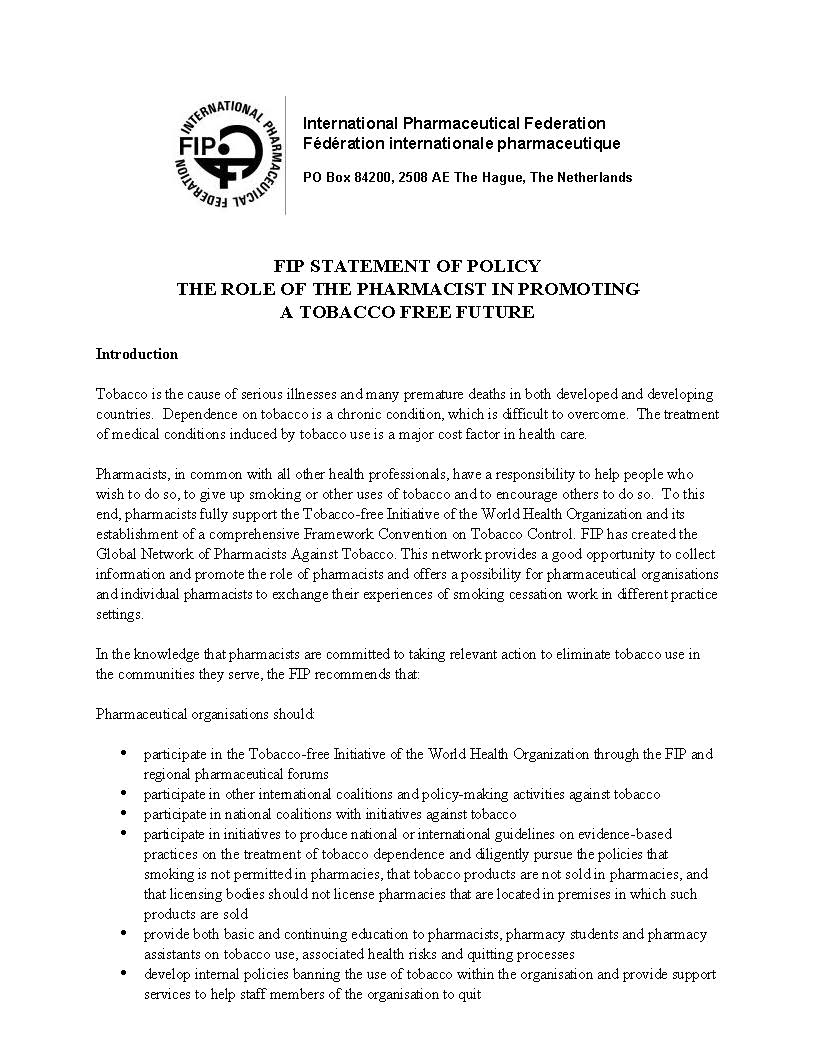
The Role of the Pharmacist in Promoting a Future Free of Tobacco (2003)
This statement supports and advocates for pharmacists to take relevant action to eliminate tobacco use in the communities that they serve.


